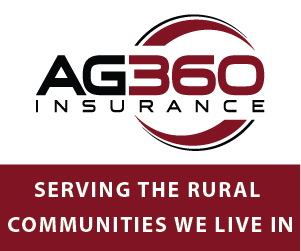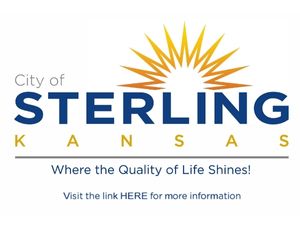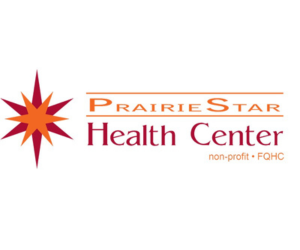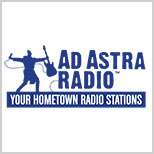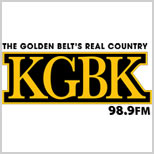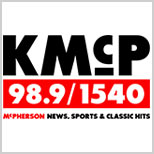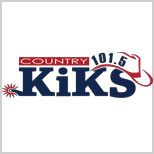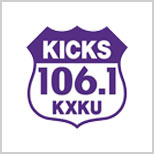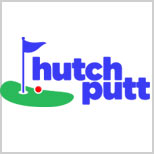The Kansas Department of Health and Environment (KDHE) and the Kansas Department of Wildlife and Parks (KDWP) are announcing the beginning of the Harmful Algal Bloom season.
The water recreation season in Kansas officially runs from April 1 to October 31, as do the harmful algae blooms (HAB) response program’s active operations. Kansans should remain vigilant while engaging in activities taking place in or on the water, such as swimming, boating, and fishing.
A harmful algal bloom (HAB) may look like foam, scum or paint floating on the water and be colored blue, bright green, brown or red. Blooms can develop rapidly; if the water appears suspicious or there is decaying algae on the shore, avoid contact and keep dogs away. These toxins can be absorbed by ingestion, inhalation of aerosols and even skin contact. Symptoms vary depending upon the type of exposure (e.g., direct contact, ingestion, inhalation) but can include rash, vomiting, diarrhea, fever, sore throat, and headache.
If you, or your pets, come into contact with algae rinse the area with clean, fresh water. Suspected HAB-related health incidents, whether human or animal, regardless of season, should be reported as soon as possible at kdhe.ks.gov/1163.
Kansas recognizes three advisory levels:
A Hazard status indicates that a HAB is present, and extreme conditions exist.
When a hazard is issued, KDHE recommends the following precautions be taken:
- Signage should be posted at all public access locations.
- It is recommended that either a portion of the lake or the entire lake or zone, be closed to the public.
- In some cases, the adjacent land should be closed as well. Actual setback distances will be determined on a site-specific basis, if necessary.
- In zoned lakes, if a lake zone is issued at a Hazard level, all other adjacent lake zones may be recommended for an advisory status dependent on lake conditions.
A Warning status indicates that a HAB is expected or present.
When a warning is issued, KDHE recommends the following precautions be taken:
- Signage should be posted at all public access locations.
- Inhalation of spray or aerosols may be harmful.
- Lake water is not safe to drink for pets or livestock.
- Lake water, regardless of blue-green algae status, should never be consumed by humans.
- Water contact should be avoided.
- Fish may be eaten if they are rinsed with clean water and only the fillet portion is consumed, while all other parts are discarded.
- Do not allow pets to eat dried algae.
- If lake water contacts skin, wash with clean water as soon as possible.
- Avoid areas of visible algae accumulation.
A Watch status means that a HAB is possible and may be present.
During the watch status, KDHE recommends the following precautions be taken:
- Signage should be posted at all public access locations.
- Water may be unsafe for humans/animals.
- Avoid areas of algae accumulation and do not let people/pets eat dried algae or drink contaminated water.
- Swimming, wading, skiing, and jet skiing are discouraged near visible blooms.
- Boating and fishing are safe. However, inhalation of the spray may affect some individuals. Avoid direct contact with water, and wash with clean water after any contact.
- Clean fish well with potable water and eat fillet portion only.
Advisories are Lifted when cell densities and toxin concentrations dissipate to levels below the Watch thresholds.
KDHE investigates publicly accessible bodies of water for blue-green algae when the agency receives reports of potential algae blooms in Kansas lakes. Based on credible field observation and sampling results, KDHE and KDWP report on potentially harmful conditions.
If you observe a scum or paint-like surface on the water, small floating blue-green clumps, or filaments in the water, or if the water is an opaque green, avoid contact and keep pets away. These are indications that a harmful bloom may be present. Pet owners should be aware that animals that swim in or drink water affected by a HAB or eat dried algae along the shore may become seriously ill or die.
For information on blue-green algae and reporting potential HAB’s, please visit kdhe.ks.gov/HAB and view our interactive story and informative video.
In late 2024, the KDHE HAB response program identified a new and evolving health concern at a Kansas public waterbody associated with another species and growth form of blue-green algae, Harmful Algal Mats (HAMs). HAMs are blue-green algae that grow attached to the bottom of the waterbody or other surfaces. However, these blue-green algae mats can become detached and float or wash up on shore. In addition, HAMs can be mixed with non-harmful green algae and other aquatic vegetation.
HABs and HAMs can produce the same toxins, but their growth types are different, as do the advisory messages and signage issued for them. HABs are composed of high densities of usually small, microscopic blue-green algae dispersed in the water column that can change the color of water and often form a surface scum, especially during warmer months. HABs can be unpredictable, and conditions can change rapidly. On the other hand, HAMs can reside in water that looks clear and clean and may often appear as excess growth that is brown or black in color that carpets the bottom of the waterbody or other surfaces. HAMs may continue to persist and grow year-round in affected waterbodies.
The health risk from HAMs is greatest when exposure occurs through ingestion and when contact or disturbance of algal mat material occurs (particularly for small children and dogs). KDHE HAB Response Program will notify public waterbody managers if HAMs are detected at the waterbody while responding to algae bloom complaints and recommend that signage be posted.
If you notice HAM signage posted at the waterbody or excess algal growth that appears black or brown in color, be aware that potential health risks may be present when engaging in recreational activities. KDHE HAB Response Program recommends the following precautions be taken at HAM affected waters:
- Do not allow people or pets to eat algal mats or ingest lake water.
- Do not touch or contact algal mats. Use caution when engaging in recreational activities, especially primary contact recreation, such as swimming. Wash with clean water after skin contact with lake water.
- Do not transport algal mats to other waterbodies and follow KDWP’s guidance for cleaning boats and equipment.
For more information on Harmful Algal Mats, please visit: www.kdhe.ks.gov/HAM

















